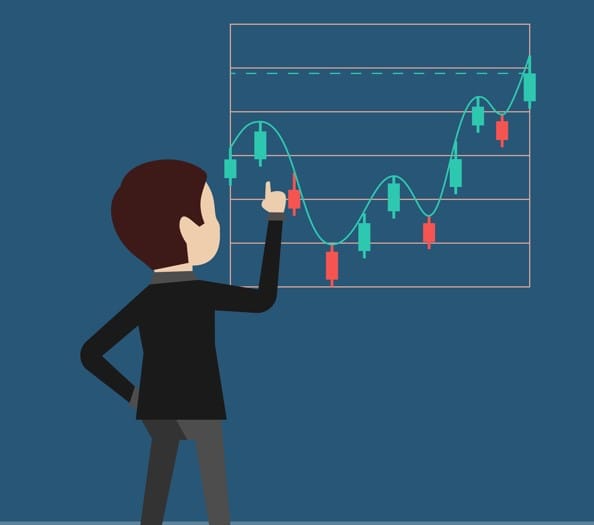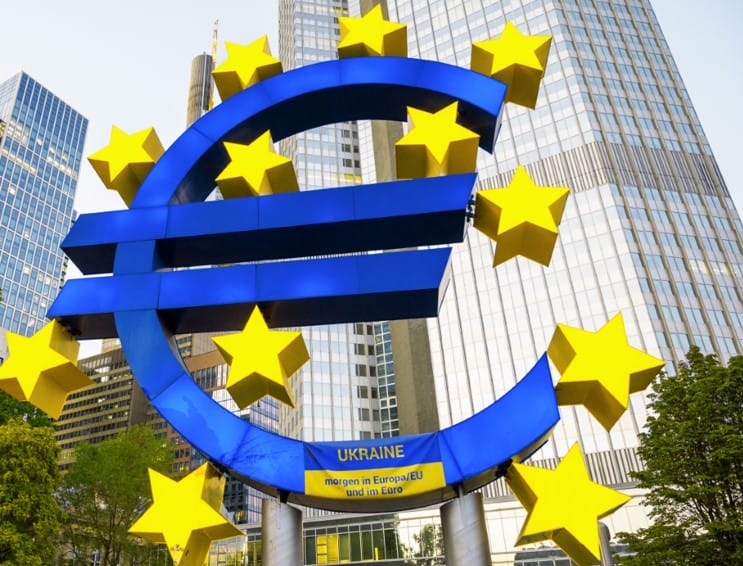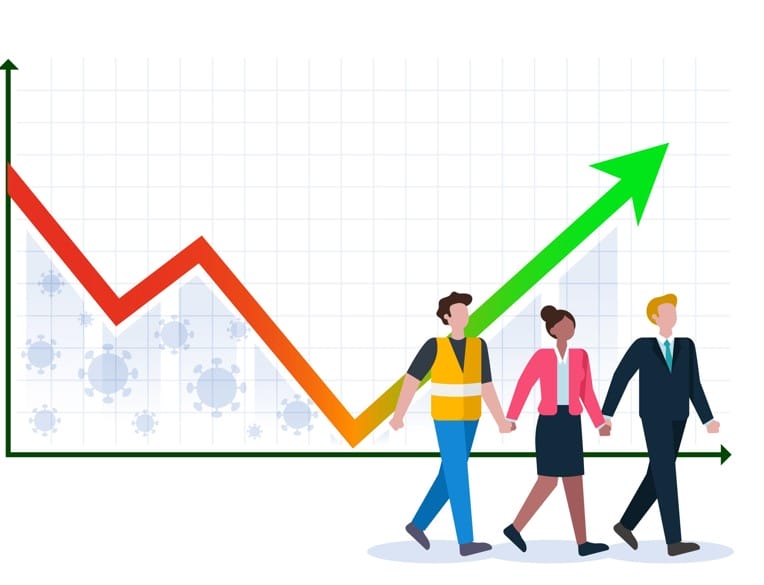The financial markets are a complex web of interconnected factors, and one intriguing correlation that has captured the attention of investors is the relationship between EUR/USD technical analysis and the movement of gold prices. In this article, we delve into the mechanisms through which the fluctuations in the EUR/USD exchange rate can influence the gold market, unraveling the intricate connections between these two significant assets.
How EUR/USD Technical Analysis Shapes Gold Price Trends

In the ever-evolving landscape of financial markets, the relationship between EUR/USD technical analysis and gold prices remains a captivating subject for investors and analysts alike. Moving forward, let’s explore the second keyword from our list: “What role does the EUR/USD exchange rate play in determining the direction of gold prices?”
Currency as a Price Driver:
The EUR/USD exchange rate serves as a crucial benchmark in global financial markets. As one of the most traded currency pairs, it reflects the relative strength and economic conditions of the Eurozone and the United States. Changes in the exchange rate can be indicative of broader economic trends, influencing investor sentiment and, consequently, impacting gold prices.
Impact of Economic Indicators:
EUR/USD technical analysis frequently involves the evaluation of economic indicators from both regions. Key factors such as GDP growth, employment figures, and inflation rates can affect the exchange rate. These economic indicators also have implications for gold prices. For instance, strong economic performance in the Eurozone might increase demand for the Euro, while a robust U.S. economy may boost the appeal of the U.S. Dollar, subsequently influencing gold prices.
Influence of Central Bank Policies:

Central banks play a pivotal role in shaping the EUR/USD exchange rate through monetary policy decisions. Interest rate changes, quantitative easing, and other policy tools impact currency valuations. The European Central Bank (ECB) and the U.S. Federal Reserve wield considerable influence, and their actions can reverberate in both currency and commodity markets. Traders analyzing EUR/USD technicals often pay close attention to central bank communications for clues about future policy directions, which can guide their gold investment strategies.
Risk Appetite and Flight to Safety:
The EUR/USD exchange rate is closely tied to global risk sentiment. In times of economic uncertainty or market turmoil, investors often seek refuge in safe-haven assets. Both the Euro and gold are considered havens in different contexts. A shift in risk appetite, reflected in the EUR/USD rate, can signal changes in investor behavior, impacting the demand for gold as a store of value.
Technical Patterns and Gold Price Forecasts:
Chart patterns and technical indicators used in EUR/USD analysis can also provide insights into potential gold price movements. Traders often observe correlations between specific technical patterns in the currency pair and subsequent trends in gold prices. Identifying these patterns can enhance forecasting capabilities and assist in making informed decisions across both markets.
Currency Wars and Global Trade Tensions:
In an interconnected world, trade tensions and currency wars can significantly impact both the EUR/USD exchange rate and gold prices. Disputes between economic powerhouses, changes in trade policies, and currency devaluations can create ripples across financial markets. Traders need to be vigilant about such global developments, as they can trigger shifts in the EUR/USD rate and influence gold price dynamics.
Unveiling Patterns: How Geopolitical Events Impact EUR/USD Technical Analysis and Gold Prices
As we venture into the third keyword from our list, let’s explore the intriguing question: “Are there specific technical indicators in EUR/USD trading that signal a rise in gold prices?”
MACD and Cross-Market Analysis:
The Moving Average Convergence Divergence (MACD) is a popular indicator in EUR/USD technical analysis. Traders often use it to identify potential trend reversals or shifts in momentum. Interestingly, changes in the MACD for the Euro-Dollar pair can precede similar movements in gold prices. Cross-market analysis involving both currency and commodity indicators can provide a comprehensive view, aiding traders in anticipating gold price rises.
Fibonacci retracement levels are widely employed in technical analysis for identifying potential support and resistance levels. In EUR/USD trading, these levels can serve as crucial markers. Traders often observe correlations between retracement levels in the Euro-Dollar pair and subsequent movements in gold prices. Identifying these levels can enhance predictive capabilities when navigating both markets.
RSI and Overbought/Oversold Conditions:
The Relative Strength Index (RSI) is a momentum oscillator used to assess whether a currency pair is overbought or oversold. In EUR/USD technical analysis, extreme RSI readings can signal potential reversals. Traders keen on gold prices often monitor the RSI in the Euro-Dollar pair, anticipating shifts that may impact both markets. Overbought conditions in EUR/USD could coincide with bullish signals for gold.
Head and Shoulders Patterns:
Head and Shoulders is a classic chart pattern utilized in technical analysis. When identified in EUR/USD charts, it can serve as a precursor to changes in market sentiment. Traders observing such patterns may anticipate corresponding movements in gold prices. Recognizing these formations allows for proactive decision-making in both currency and commodity markets.
Bollinger Bands and Volatility:
Bollinger Bands are effective in gauging market volatility. In EUR/USD technical analysis, narrowing or widening bands can indicate potential changes in volatility. Traders who monitor these bands for the Euro-Dollar pair can use the insights gained to anticipate volatility in gold prices. Increased volatility in the currency market may coincide with heightened activity in the gold market.
Inverse Relationship with the U.S. Dollar Index:
The U.S. Dollar Index measures the value of the U.S. Dollar against a basket of major currencies, including the Euro. An inverse relationship often exists between the U.S. Dollar Index and gold prices. Traders analyzing EUR/USD technicals pay attention to the Dollar Index, as movements in this index can signal potential gold price movements. A weakening dollar tends to be favorable for gold.
Navigating Uncertainty: How Macro-Economic Factors in the Eurozone Affect EUR/USD Technical Analysis and Gold Prices
Moving on to the fourth keyword from our list: “How do macroeconomic factors in the Eurozone affect the technical analysis of gold prices?”
GDP Growth and Currency Valuations:
One of the fundamental macroeconomic factors is the Gross Domestic Product (GDP) growth of the Eurozone. Positive economic performance often leads to increased investor confidence in the Euro, strengthening the EUR/USD exchange rate. This, in turn, can impact gold prices. As the Eurozone’s economy expands, the demand for gold may rise, driven by a broader sense of stability and optimism among investors.
Inflation Rates and Currency Devaluation:
Inflation rates within the Eurozone have a direct impact on the EUR/USD exchange rate. Central banks closely monitor inflation levels and may adjust monetary policies accordingly. Inflationary pressures can lead to currency devaluation, influencing the Euro’s strength against the U.S. Dollar. Traders analyzing EUR/USD technicals should be attuned to inflation trends as they can signal potential shifts in gold prices, with investors turning to gold as a hedge against currency devaluation.
Interest Rates and Yield Differentials:
Interest rate differentials between the Eurozone and the United States are critical drivers of the EUR/USD exchange rate. Central banks’ decisions on interest rates affect the attractiveness of holding Euro-denominated assets compared to U.S. Dollar-denominated assets. Traders incorporating EUR/USD technical analysis into their strategies must consider these interest rate differentials as they can impact gold prices. Changes in interest rates may alter the opportunity cost of holding non-interest-bearing assets like gold.
Trade Balances and Currency Flows:
The trade balance of the Eurozone influences the demand for the Euro. A trade surplus may strengthen the Euro, while a deficit could weaken it. Traders examining EUR/USD technicals often monitor trade balance data as it provides insights into potential currency movements. Changes in the EUR/USD exchange rate can, in turn, affect gold prices, especially if they coincide with shifts in global trade dynamics.
Political Stability and Investor Confidence:
Political stability within the Eurozone is a significant factor influencing investor confidence. A stable political environment fosters economic growth and can contribute to a stronger Euro. EUR/USD technical analysis may reflect changes in sentiment based on political developments, which can, in turn, impact gold prices. Investors often turn to gold as a safe-haven asset during periods of political uncertainty.
Riding the Waves: How Central Bank Policies in Europe and the U.S. Influence EUR/USD Technical Analysis and Gold Prices
Embarking on the fifth keyword from our list: “How do central bank policies in Europe and the United States affect gold prices through technical analysis?”
Central banks, as stewards of monetary policy, hold considerable sway over currency values and, by extension, impact the technical analysis of gold prices. Delving into the policies of the European Central Bank (ECB) and the U.S. Federal Reserve reveals a complex interplay that shapes both the EUR/USD exchange rate and gold prices.
Interest Rate Decisions and Currency Valuations:
One of the primary tools at the disposal of central banks is the control of interest rates. The ECB and the Federal Reserve use interest rate decisions to achieve economic objectives. Changes in interest rates influence the attractiveness of holding Euro or U.S. Dollar-denominated assets. Traders employing EUR/USD technical analysis pay close attention to central bank statements and decisions, as shifts in interest rates can trigger corresponding movements in gold prices. For example, a rate hike by the Federal Reserve might strengthen the U.S. Dollar and potentially dampen gold prices.
Quantitative Easing and Market Liquidity:
Central banks may resort to unconventional measures, such as quantitative easing (QE), to inject liquidity into financial markets during economic downturns. The impact of QE on the EUR/USD exchange rate can be profound. Traders using technical analysis on the Euro-Dollar pair must factor in the potential effects of central bank interventions on market sentiment. Changes in liquidity and market dynamics can subsequently influence gold prices, with increased liquidity often being associated with higher gold valuations.
Forward Guidance and Market Expectations:
Central banks provide forward guidance to communicate their intentions regarding future monetary policy. Clarity or ambiguity in this guidance can influence market expectations. Traders incorporating EUR/USD technical analysis into their strategies assess central bank communications for cues that may signal shifts in currency trends. Changes in market expectations driven by central bank guidance can, in turn, impact gold prices as investors adjust their portfolios in response to evolving economic conditions.
Currency Wars and Competitive Devaluations:
In the realm of global economics, the actions of one central bank can trigger responses from others, leading to currency wars or competitive devaluations. Such scenarios impact both the EUR/USD exchange rate and gold prices. Traders navigating these dynamics through technical analysis must remain vigilant about central bank policies globally. Currency devaluations can prompt investors to seek refuge in gold, influencing its technical patterns.
Inflation Targeting and Real Rates:
Central banks often have an inflation target as part of their mandate. Traders analyzing EUR/USD technicals should consider how central banks’ pursuit of inflation targets influences real interest rates. Real rates, adjusted for inflation, can impact the opportunity cost of holding gold. For instance, if inflation outpaces interest rates, real rates become negative, making non-interest-bearing assets like gold more attractive.
Conclusion
The influence of central bank policies in Europe and the United States on gold prices through EUR/USD technical analysis is a dynamic and intricate process. Traders must stay abreast of interest rate decisions, unconventional measures, forward guidance, currency wars, and inflation targeting. Recognizing the nuances of central bank actions and their implications for both currency and commodity markets is paramount for those seeking to navigate the volatility and opportunities that arise in the ever-changing landscape of global finance.






